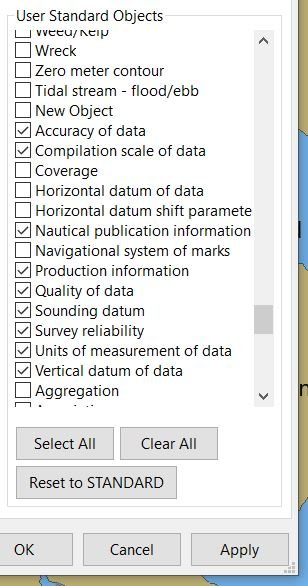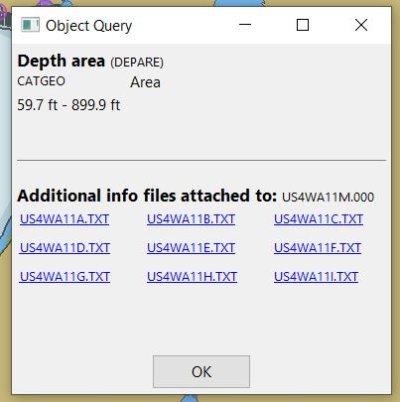Portage_Bay
Guru
- Joined
- Oct 19, 2015
- Messages
- 2,457
- Location
- United States
- Vessel Name
- Pacific Myst
- Vessel Make
- West Bay 4500
In the thread Boat sunk in Glacier Bay marcs raises a good question in post #54
That indeed is an interesting question. I don't have any answers, just starting to look into it. Input is very welcome from users more intimately familiar with the use of vector charts (ENC). I'll say up front I'm going to miss Raster and paper charts when they're gone. It's so easy to find nearly all the info and data a mariner of smaller and recreational vessels needs. I understand the benefits of ENC, especially to mariners of larger vessels. But they come at the risk of missing important info and data by mismanaging the settings on the plotter displaying the vector charts.
My initial thoughts are centered around NOAA's ENCs as displayed on OpenCPN because that's what I'm using at the moment.
ENCs depending upon the plotter give the mariner the ability to turn off / on various settings. I've started to experiment with those shown in the attached image.
Also I can right click on an ENC select Object query and find a lot of info. Some about the soundings, some text that might be what's usually found on raster and paper charts. Lots to learn yet.
Yet another thing to consider is the Zone of Confidence. A good starting point to understand ZOC is here What is Zone of Confidence in Nautical Charts?
Lots to learn yet. As I said up top, raster and paper are so much easier. Right now it's a beautiful day and time to step away from the keyboard.
I've started this thread because the discussion deserves it's own thread.The latest NOAA ENC (vector) chart does, raster charts are no longer updated. The thing I haven't found and would love to know is how to figure out when/how the soundings were done for an ENC, with good old raster charts they are listed in the corner somewhere, like the attached example.
That indeed is an interesting question. I don't have any answers, just starting to look into it. Input is very welcome from users more intimately familiar with the use of vector charts (ENC). I'll say up front I'm going to miss Raster and paper charts when they're gone. It's so easy to find nearly all the info and data a mariner of smaller and recreational vessels needs. I understand the benefits of ENC, especially to mariners of larger vessels. But they come at the risk of missing important info and data by mismanaging the settings on the plotter displaying the vector charts.
My initial thoughts are centered around NOAA's ENCs as displayed on OpenCPN because that's what I'm using at the moment.
ENCs depending upon the plotter give the mariner the ability to turn off / on various settings. I've started to experiment with those shown in the attached image.
Also I can right click on an ENC select Object query and find a lot of info. Some about the soundings, some text that might be what's usually found on raster and paper charts. Lots to learn yet.
Yet another thing to consider is the Zone of Confidence. A good starting point to understand ZOC is here What is Zone of Confidence in Nautical Charts?
Lots to learn yet. As I said up top, raster and paper are so much easier. Right now it's a beautiful day and time to step away from the keyboard.


